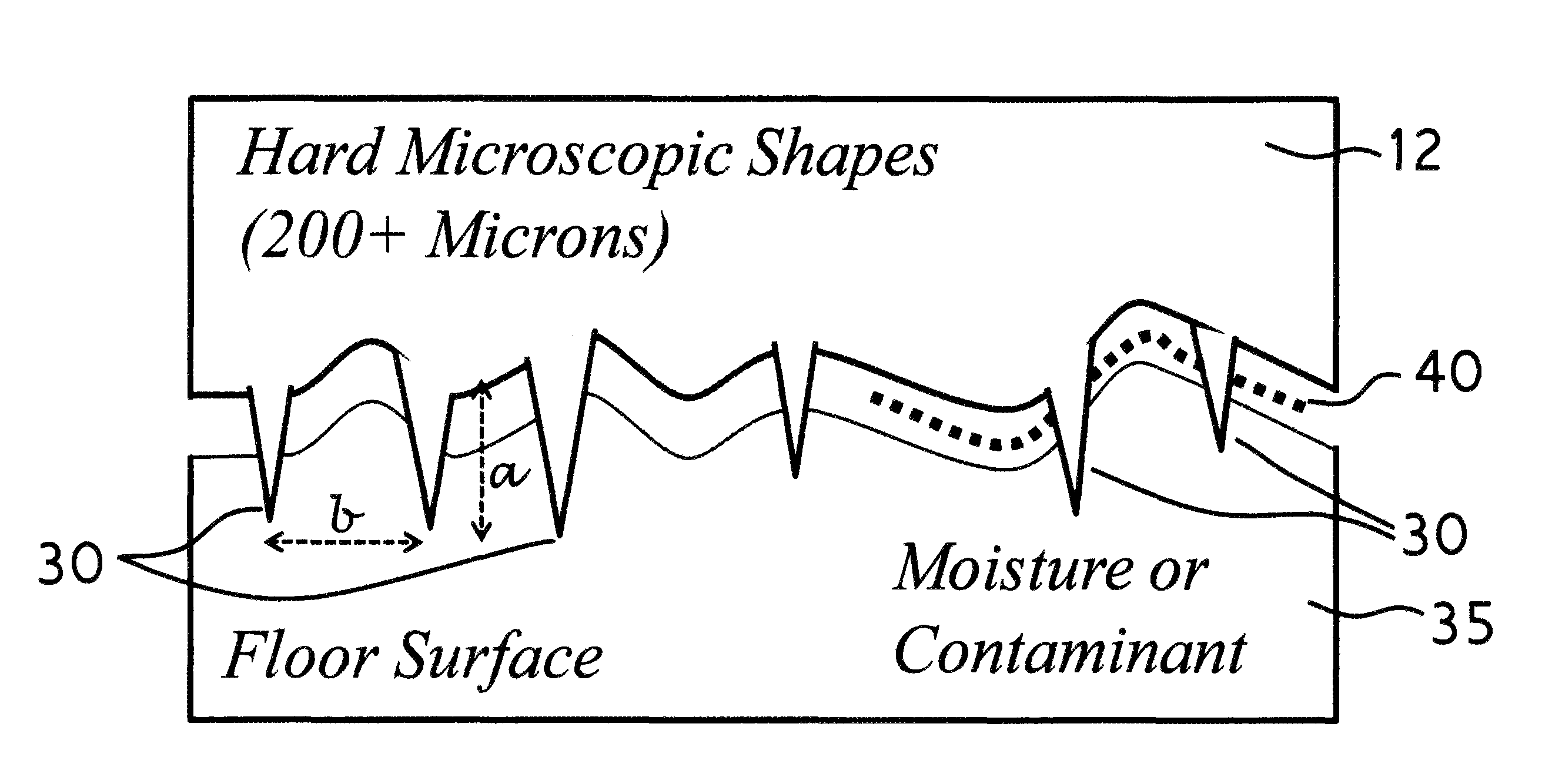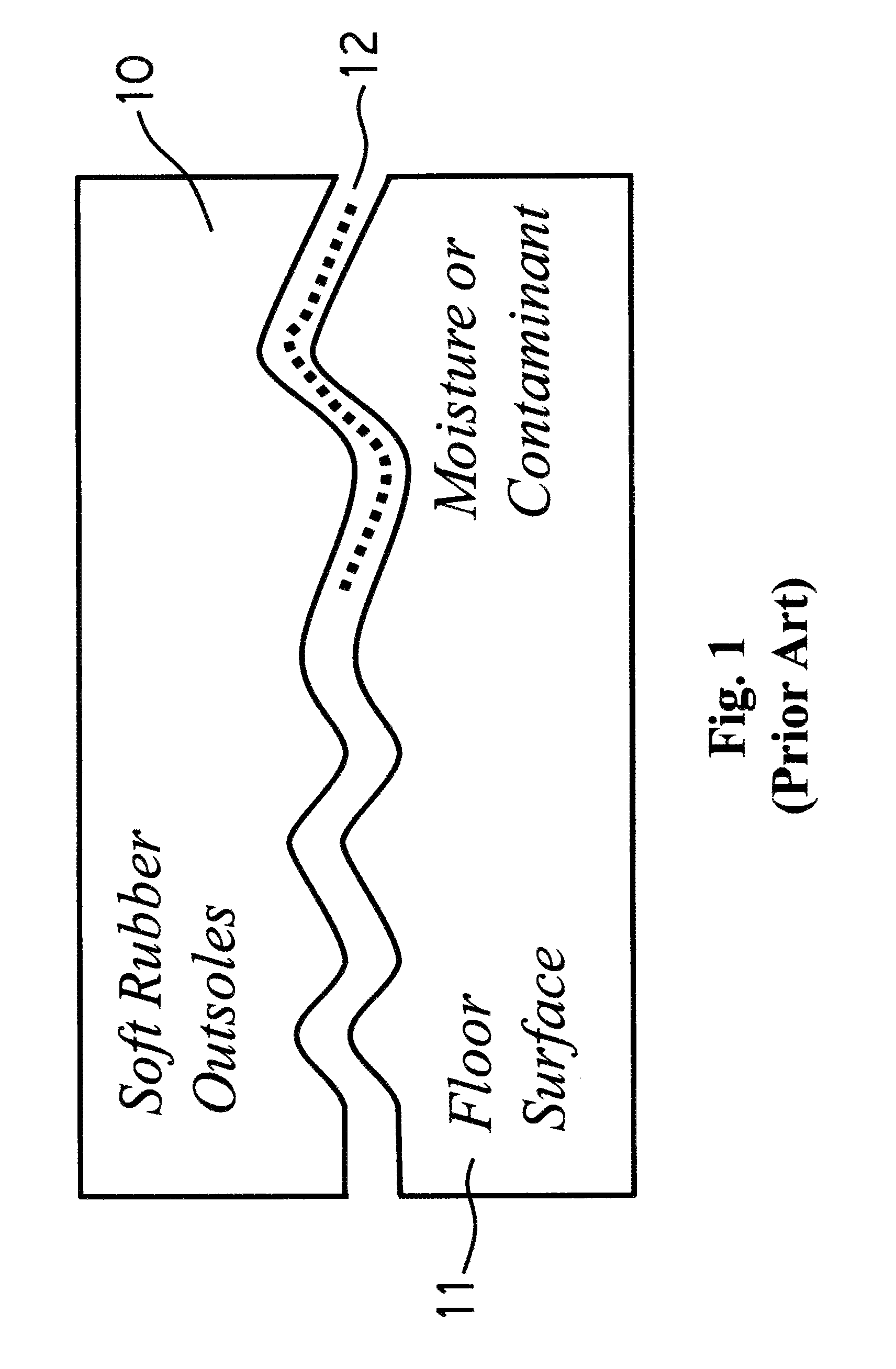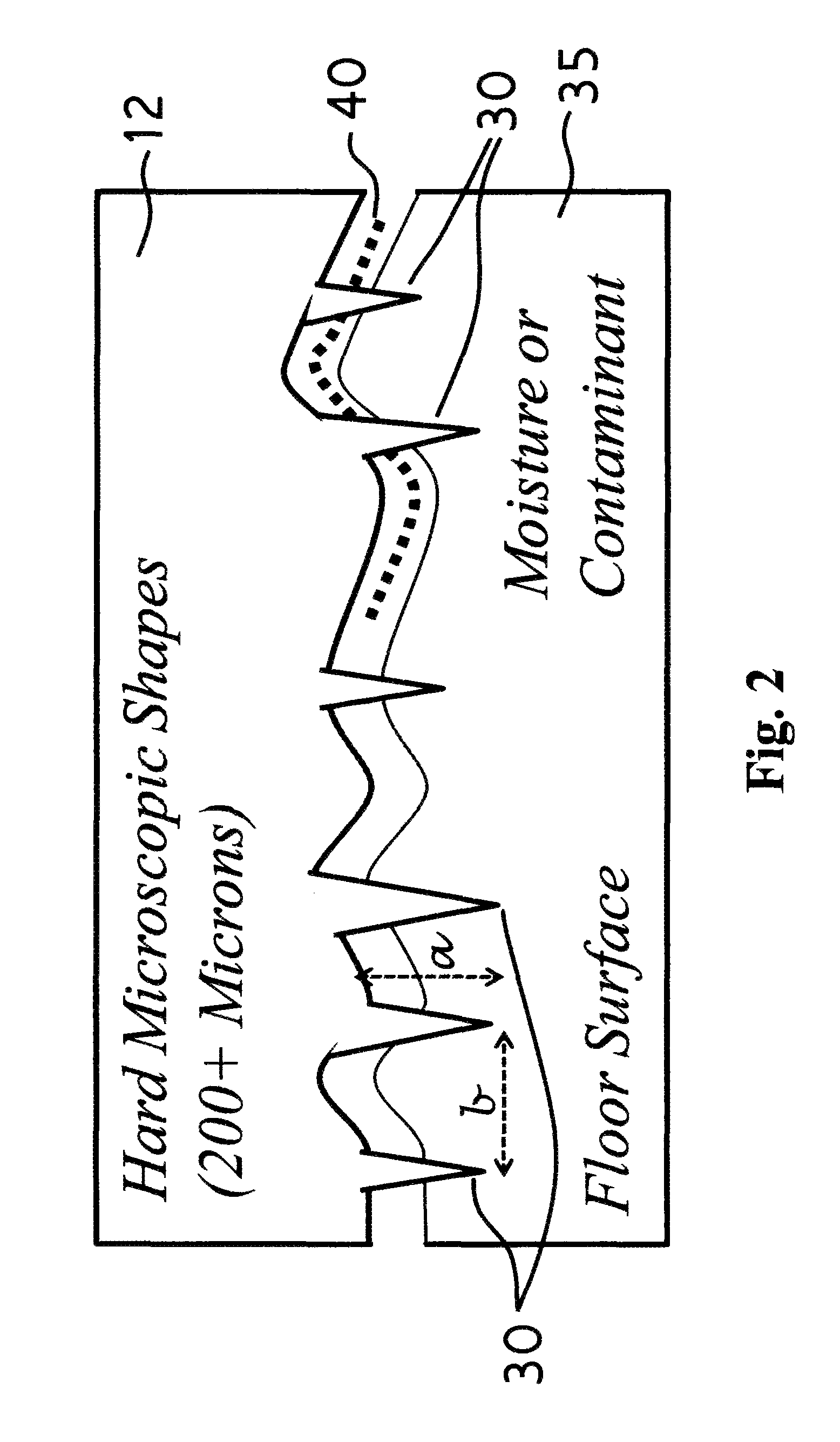Footwear safety apparatus, device, and method
a technology for footwear and safety, applied in the field of footwear safety, can solve the problems of dangerous loss of balance, common causes of injuries and fatalities, millions of lost workdays per year, etc., and achieve the effect of reducing the absolute force felt, minimizing the fall force, and reducing the risk of serious injury
- Summary
- Abstract
- Description
- Claims
- Application Information
AI Technical Summary
Benefits of technology
Problems solved by technology
Method used
Image
Examples
example 1
Method of Manufacture—Direct Application to Shoe
[0062]First, the sole of a shoe with a ±10° heel bevel is selected so that the micro material can be applied directly to the back of the shoe above the ±10 degree heel bevel. The area above the heel receives a first layer of an adhesive resin in the desired location. Next, a second layer consisting of a plurality of preselected microscopic silicon carbide particles, 200 micron diameter minimum, with the desired shapes, wave lengths and amplitudes are applied to the first layer of the adhesive resin.
[0063]Next, a third layer of epoxy resin is applied over the microscopic particles. This third thin layer of epoxy resin anchors all of the particles but does not totally cover them allowing them to pierce the microscopic roughness of any floor surface. These extremely hard shapes combined with the resin layers provide a highly durable product.
example 2
Method of Manufacture—Mass Production of Individual Devices
[0064]Another cost-effective method of manufacturing is via mass production of thin plastic or fiberglass bases that are later glued into a socket on the shoe outsole. The same process used above would be utilized to cover the heel base and the edges of the base. The thinness of each of the two adhesive resins does not impede the ability of the sharp microscopic edges to pierce the microscopic roughness of the floor surface during a slip. The approach allows standard size heel bases to be processed side by side in order to save time and materials. The coated bases could be customized for each footwear manufacturer and shipped to their preferred assembly facilities. Each base would then be glued, and or fastened, to the existing rubber heel. The base shape, the product color and the micro-shape materials are customized cost effectively using this approach. Each alteration, except color changes, would need to be tested in a sl...
PUM
 Login to View More
Login to View More Abstract
Description
Claims
Application Information
 Login to View More
Login to View More - R&D
- Intellectual Property
- Life Sciences
- Materials
- Tech Scout
- Unparalleled Data Quality
- Higher Quality Content
- 60% Fewer Hallucinations
Browse by: Latest US Patents, China's latest patents, Technical Efficacy Thesaurus, Application Domain, Technology Topic, Popular Technical Reports.
© 2025 PatSnap. All rights reserved.Legal|Privacy policy|Modern Slavery Act Transparency Statement|Sitemap|About US| Contact US: help@patsnap.com



